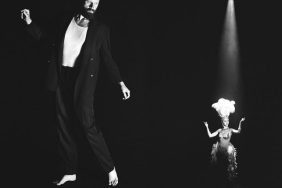Photo: Hans van der Meer Mytholmroyd, England, 2004, © Hans van der Meer / Courtesy of the Artist.
Imagine Britannica from the outside, looking in, the foreigner abroad with camera in hand traversing the island and capturing the curiosities of this quirky land. Perhaps there is something familiar in the images, the iconography repeating itself, the damp, misty skies under which a fondness for formality lives creating a society of Jones keeping up appearances one way or another.
Also: Seeing Larry Clark’s “Tulsa” Through Fresh Eyes
But which photographers—and which photos? That’s where British photographer Martin Parr (b. 1952) and Alona Pardo, Curator at Barbican Art Gallery, London, come in. Together, they have edited Strange and Familiar: Britain as Revealed by International Photographers (Prestel), which accompanies an exhibition at the Barbican, on view now through June 19, 2016. Featuring 200 photographs by masters of the medium including Henri Cartier-Bresson, Bruce Davidson, Robert Frank, Sergio Larrain, Paul Strand, and Garry Winogrand, Strange and Familiar takes us across the British Isles and to Ireland, providing a powerful look at the people of nation during the century that their empire fell, bringing us into a new century where regular is de rigeur, though it wouldn’t be England without the eccentric characters.

Tina Barney The Red Sheath, 2001. © Tina Barney, Courtesy of Paul Kasmin Gallery
Alona Pardo and Jane Alison, also of the Barbican, write in the book’s foreword, “As Scotland and Wales consolidate their status as nations and Great Britain seems as though it is on the point of unraveling, this diverse and rich collection of images contributes to the debate about what it means to be British and how we are perceived by those outside our borders.” And indeed, that offers more than a few fresh perspectives about those who have long considered themselves the arbiters of civilized society, despite the fact such sentiments are clearly invalidated by their imperialist and colonial practices.
Nevertheless, having British editors edit this book reveals the image of themselves they find most compelling. This is not quite an international perspective, so much as it is the ability to edit the story wonderfully. As Martin Parr writes, “So what do we learn about ourselves by studying the many different ways of looking at the United Kingdom? In the first instance, clichés have not become clichés without good reason. If you were to ask anyone who know the country to city some key images that best represent British life, you would find London landmarks, the British seaside, a nice cup of tea, ad so on. What a shame you really cannot photograph Radio 4!”

Akihiko Okamura Northern Ireland, 1970, © Akihiko Okamura / Courtesy of the Estate of Akihiko Okamura, Hakodate, Japan
Home sweet home, if there ever was. Even the scent of rebellion as exemplified by the Swinging Sixties and the punk scene are possessed by the perfume of nostalgia and its tender caress. Nothing edgy, nothing except a brief moment in Northern Ireland in 1969 and ’70, when Japanese photographer Akihiko Okamura documented the clashes between Catholics and Protestants in the Battle of Bogside in Derry/Londonderry.
And then suddenly, something creeps into view, the boundaries of the empire that extend of the British Isles themselves. And the bloodshed, and for what? Out of sight, out of mind, so very much. And then all these other photos, so quaint and civilized, so quirky and proper, suddenly sit in stark contrast to the larger world. It’s a very Strange and Familiar story, the United States originally being a colony itself.

Cas Oorthuys London, 1953. © Cas Oorthuys / Nederlands Fotomuseum
All photos: from Strange and Familiar: Britain as revealed by international photographers, courtesy of Prestel.
Miss Rosen is a New York-based writer, curator, and brand strategist. There is nothing she adores so much as photography and books. A small part of her wishes she had a proper library, like in the game of Clue. Then she could blaze and write soliloquies to her in and out of print loves.







